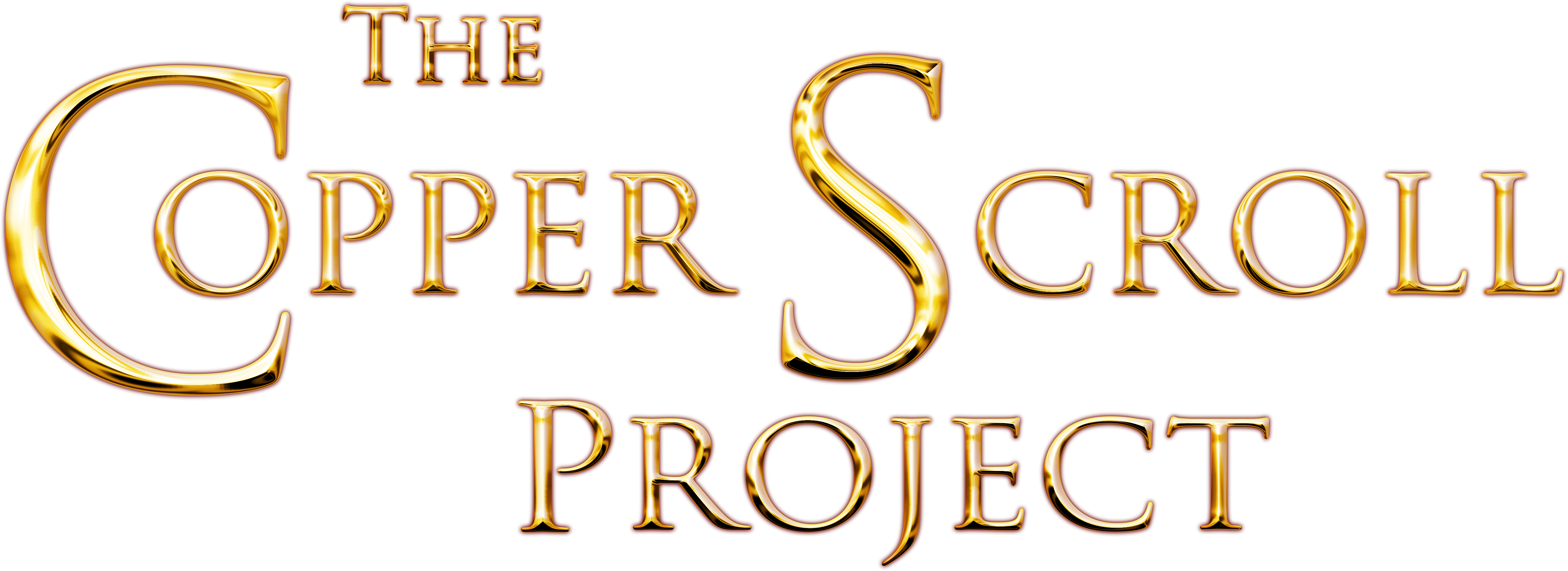
Dedicated to the Relentless Pursuit of a Promise
Emeq HaMelek
Written in the 17th Century, this document gives a detailed account of the creation of the Copper Scroll, listing the men who tapped each letter into the metal document and the treasures to be found.
"These Mishnayot (Records) were written by five righteous men... They concealed the vessels of the Temple and the wealth of the treasures that were in Jerusalem which will not be discovered until the day of the coming of Mashiach..."
The Copper Scroll
Unlike any other Dead Sea Scroll, this unique document was hammered into copper sheets and riveted together—a testament to the importance of its contents.
The scroll contains precise measurements and locations pointing to hidden treasures of immense historical and religious significance.
II Macabees
The second chapter tells the story of Jeremiah instructing the Babylonian captives not to let the law depart from them during their 70-year exile.
It describes Jeremiah hiding the Tabernacle of Moses, the Altar of Incense, and the Ark of the Covenant in a "sealed" cave on a common route passing Qumran headed to Mt. Nebo—described the same as in the Copper Scroll.
The Marble Tablet
Found in the Tomb of Ezekiel in Iraq with the Tablets that contain the book of Ezekiel, this marble tablet tells a similar story about the Copper Scroll and its treasures.
The tablet confirms the names of the same five writers mentioned in Emeq HaMelek, providing independent verification of this extraordinary historical account.
The Apocalypse of Baruch
Although written in a mystical format, it tells of five angels hiding the treasures of Israel in the ground during the time of the Babylonian siege.
The artifacts listed include the Tabernacle and its holy vessels, the 48 Precious Stones adorning the priest, the Altar of Incense, the Veil and the Ark of the Covenant.
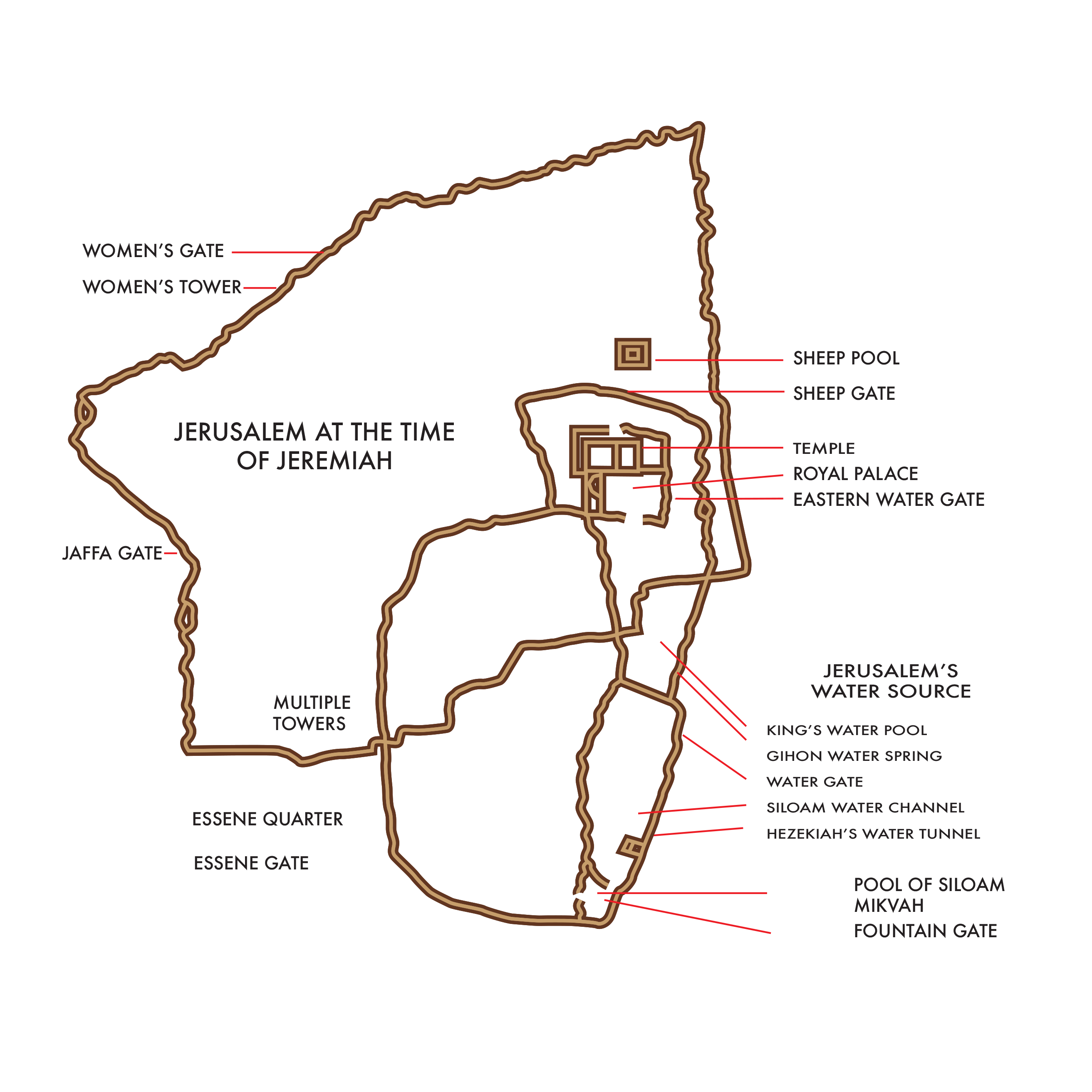
A Mirror of Jerusalem
The ancient settlement of Qumran was deliberately designed to mirror the layout of Jerusalem's Temple Mount. This remarkable architectural parallel suggests that Qumran served as more than just a settlement—it was a carefully planned repository for the Temple's most sacred treasures.
The mirroring of Jerusalem's sacred architecture in Qumran's layout provides a crucial key to understanding the locations described in the Copper Scroll.
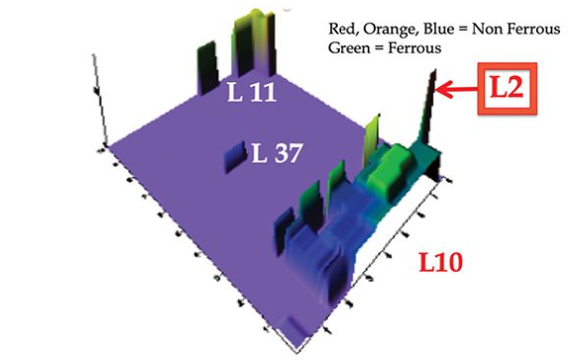
Scientific Verification
Under the supervision of Israeli Knesset Deputy Speaker Moshe Feiglin, powerful metal detector scans were conducted at four key locations around Qumran's ancient ruins.
Location 37
Shows evidence of a significant quantity of silver ingots, potentially used to fund Zerubbabel's Temple construction.
Locations L1, L10, and L11
All scans indicate substantial deposits of both ferrous and non-ferrous metals, precisely matching the Copper Scroll's descriptions.
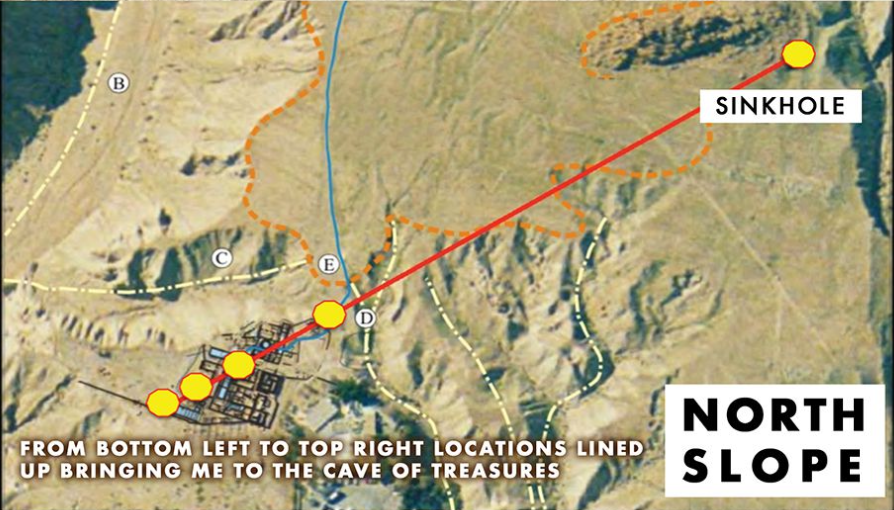
A Pattern Emerges
The five identified locations form a precise geometric alignment, pointing directly to a significant geological feature—a sinkhole that may hold the key to unlocking this ancient mystery.
The Magnitude of Discovery
The convergence of ancient texts, modern technology, and archaeological evidence points to what could be the most significant archaeological discovery in history.
With the support of the Israeli government, we are preparing to begin excavation in the coming months. Your support can help make this historic discovery a reality.
Learn More

The Project
Oklahoma winters are bitterly cold, especially the predawn morning of the 21st of December 2006. Sitting at my desk wrapped in a blanket I turned on my computer and waited. Realizing my research into the era of Jeremiah was complete, I hesitated. Staring at the flickering monitor Vendyl Jones came to mind. This, I thought, was a perfect time to try something different, something that haunted me since meeting the Texas gentleman months prior. The old guy, love him or hate him, had some interesting things to say about a strange set of copper scrolls from Qumran; details that inspired me to reconsider its role in Biblical history. In all my years of studying the Dead Sea Scrolls, that scroll seemed a waste of energy; it made no sense and honestly, bored me to tears.
Read More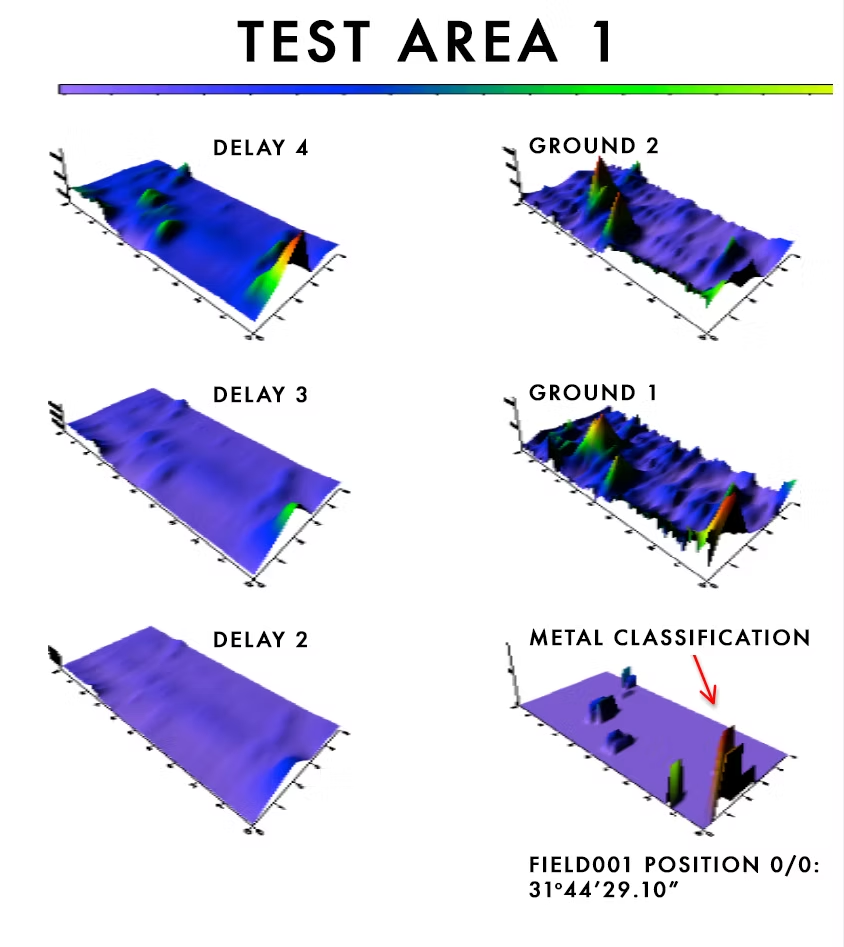
Results of Deepscan Testing at Qumran Site
On Wednesday, 11 June 2014, electronic testing of four areas in and around the confines of the ruins was conducted at the Qumran National Park. The gentleman authorizing the examination, motivated by his insight and passion for his people, his country and the history of his nation, conducted a simple exploratory test of the grounds with highly accurate non-invasive equipment to determine if a more exhaustive examination of the Qumran complex was justified prior to approaching the governing officials and the people of Israel for a formal and complete examination of the ruins and surrounding terrain.
Read More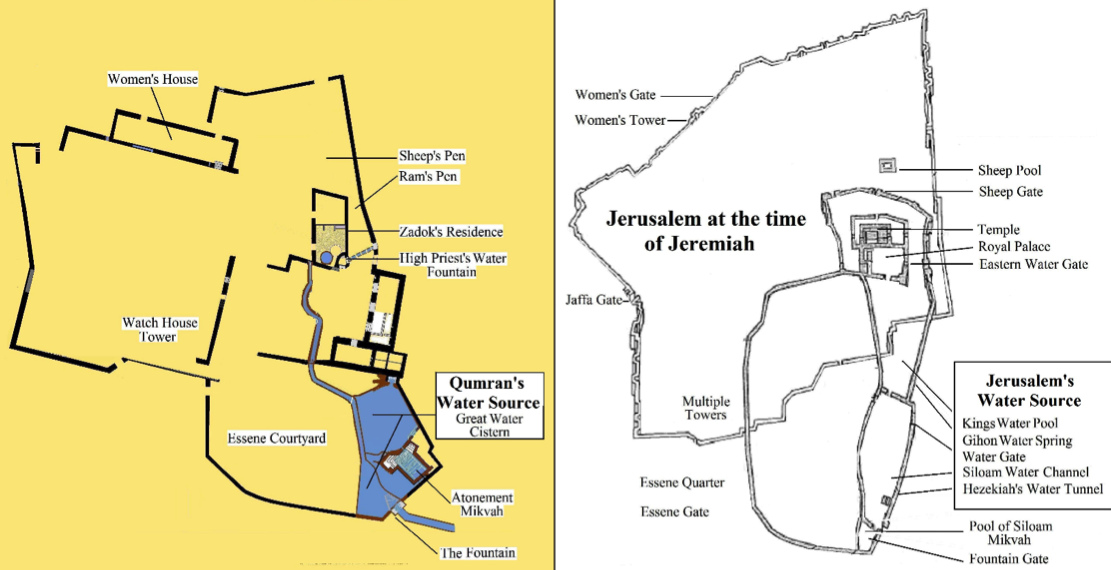
Qumrusalem - Undeniable Similarities
Three sheets of extremely oxidized copper hidden centuries ago held secrets to find 57 hoards of amazing treasures described by the Hebrew words jutting from their surface. There is more to be gained from the document, far more. The text has a secret not yet realized by the scholars on matters of Qumran. Had the Bedouins found the scroll and sold it for scrap metal it may have brought enough money to purchase a cup of hot Turkish coffee. Another priceless aspect to the scroll, however, waits its turn in the spotlight after each trove of silver and every stack of buried gold are safely locked in vaults. Those gems of knowledge remained locked in the document’s descriptive wording just as securely as the more obvious treasures and artifacts. With each location the purpose of every room and courtyard guiding the reader to its precious dowry peels away and with it the shroud of ignorance blanketing the structure’s purpose vanishes. That unexpected knowledge detailing the spaces of Qumran will prove to be the greatest initial benefit unlocking details into a mysterious sect of men by describing their day to day use of the buildings at Qumran giving us an intimate look into their stark environment and lifestyle.
Read More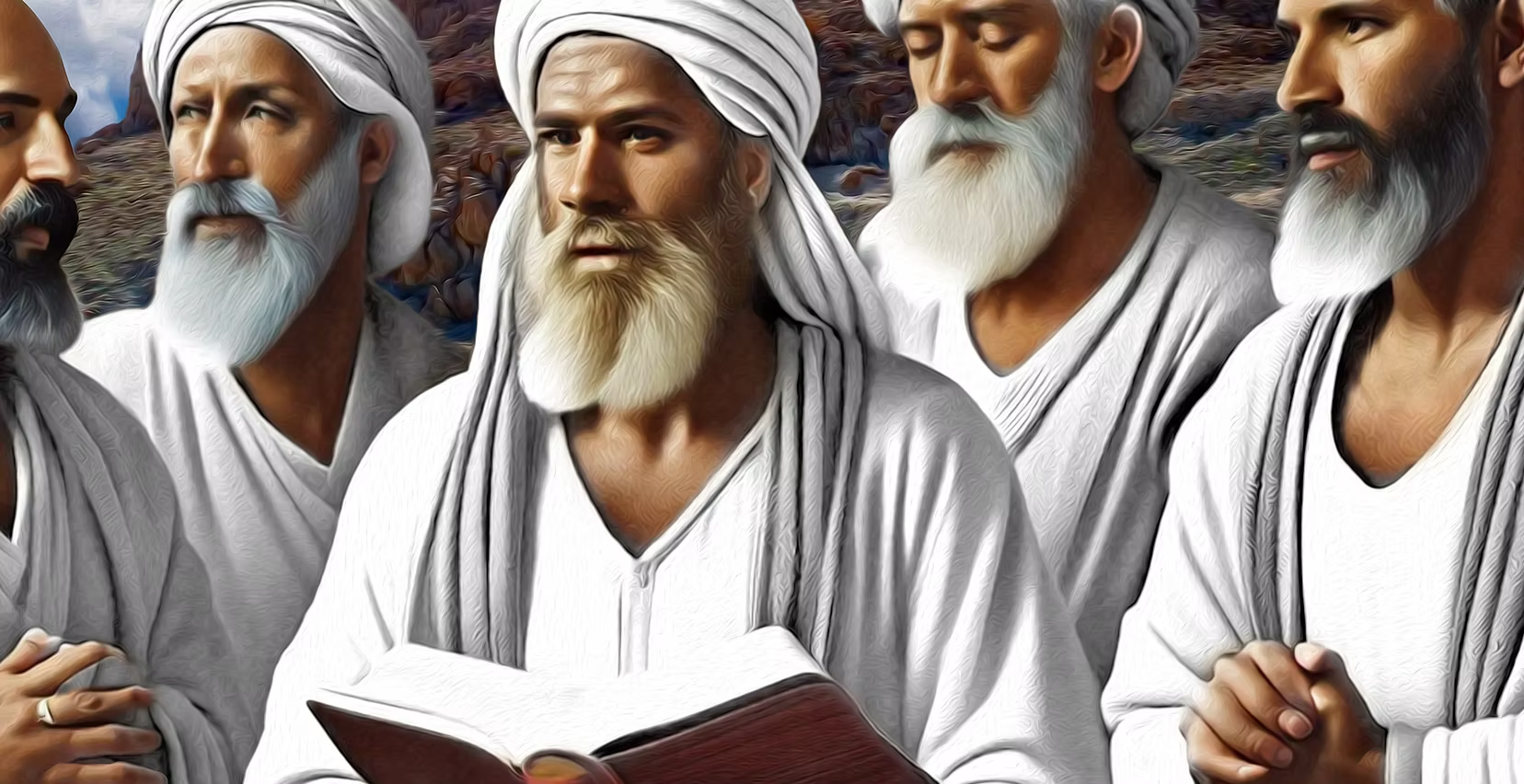
The Prophets That Wrote the Copper Scroll
Below are verses from the Book of Haggai, one of five men said to have written the Copper Scroll (CS). Two of those men were prophets from the Bible, “Haggai and Zechariah.” That information comes from two sources; one is a 17th century book called “Emeq Ha Melek (Valley of the King).” The second source has nearly identical wording and dates the Copper Scroll to the time of Jeremiah, Haggai, Zechariah, Ezekiel and the war with Babylon. The opening lines of the second document, two Marble Tablets from Ezekiel’s tomb, also names the same “five writers.” Imagine…if those two documents are correct, you are looking at the handwriting of Haggai and Zechariah when you check out the facsimile of the Copper Scroll below. Those five men, assisted by 100 priests, buried amazing things, portions of which you will find listed in excerpts from Emeq Ha Melek in this week’s same article.
Read More